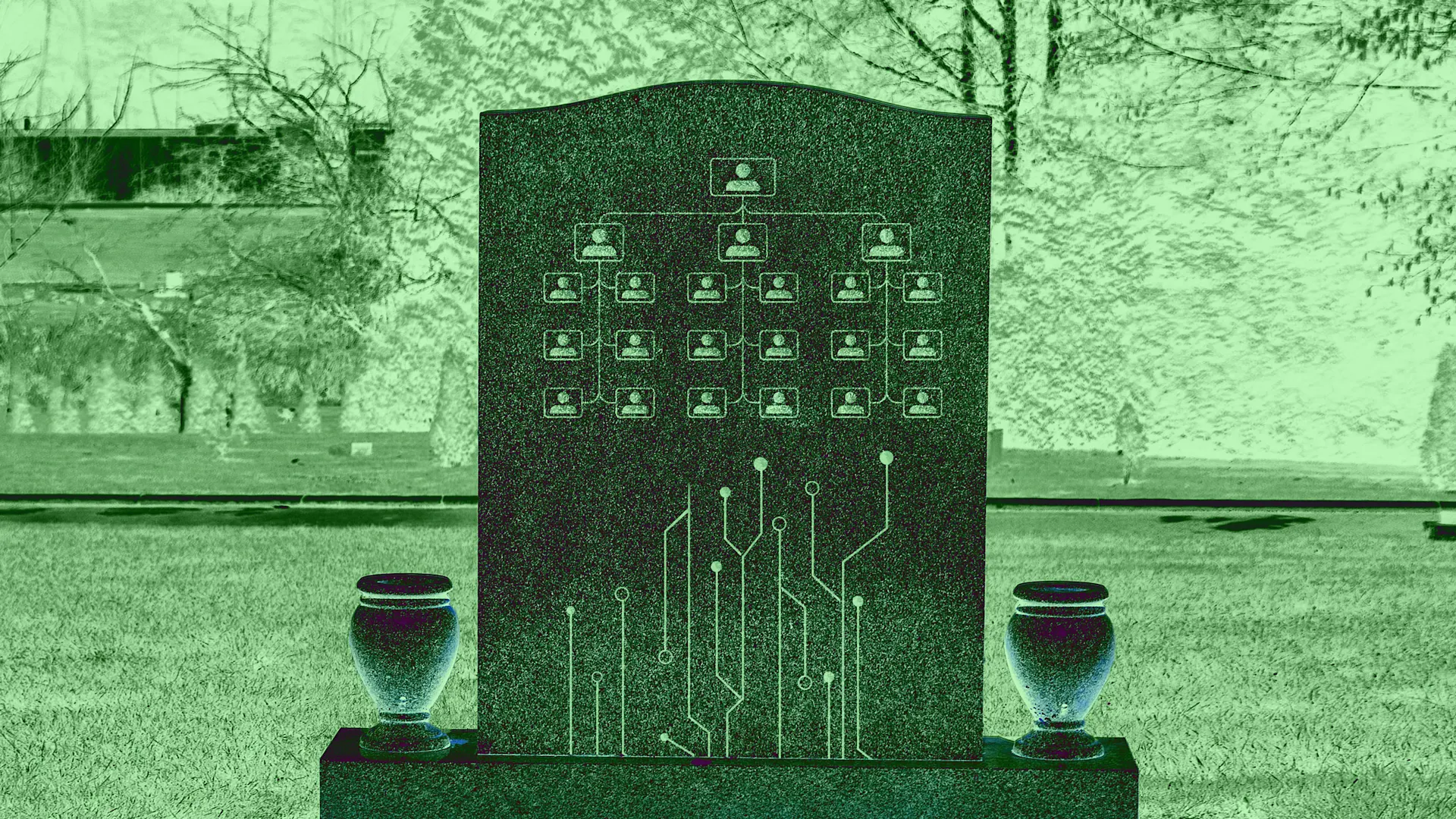Inside the fall and rise of ‘unbossing.’
Over the past few years, the corporate world has been reshaped by a quiet revolution: the rise of “unbossing.” Companies like Dell, Amazon, Microsoft, and Google have aggressively flattened their organizational structures, stripping away layers of middle management to boost agility and efficiency. According to Gartner, by 2026, 20% of organizations will leverage AI to eliminate more than half of their current middle management roles, fundamentally reshaping their hierarchies. A 2025 Korn Ferry Workforce survey underscores this shift, with 41% of employees reporting that their companies have already reduced managerial layers.
As Dario Amodei, CEO of Anthropic, has warned, AI could lead to a “white-collar massacre” if companies fail to adapt thoughtfully. And indeed, AI does present an unprecedented opportunity to deliver efficiency gains by automating many traditional middle management functions—from coordination and scheduling to data analysis and performance monitoring. Companies that fail to capture these efficiencies risk becoming bloated and uncompetitive in an increasingly lean marketplace.
Yet rushing to gut the middle management layer without careful consideration is equally dangerous. As I explored in a previous article, overzealous workforce reductions can lead to devastating losses of institutional knowledge and the elimination of crucial career development pathways. The challenge isn’t whether to use AI to streamline management—it’s how to do so intelligently.
REFRAMING THE ROLE OF MIDDLE MANAGEMENT
To navigate this transformation effectively, companies must shift their perspective from simply eliminating managerial layers to strategically reimagining their purpose. Middle managers have long served as the backbone of organizations, coordinating teams, overseeing operations, and ensuring accountability. Many of these tasks—scheduling, data analysis, approvals, and audits—are precisely where AI either already excels or will excel once agentic AI is fully implemented. These systems can automate repetitive processes, monitor performance in real time, and provide data-driven insights with a speed and accuracy that humans simply cannot match.
This presents a clear opportunity for efficiency gains. By offloading these routine functions to AI, organizations can reduce costs and accelerate decision-making. However, this automation doesn’t eliminate the need for human management—it transforms it. Notably, the evolved middle management role will increasingly blur traditional boundaries with HR functions, as managers become more deeply involved in talent development, cultural transformation, and employee well-being.
Three key functions will define the future of middle management:
- Orchestrators of AI-Human Collaboration: As AI agents become integral to business operations, managers will need to master the art of orchestrating hybrid teams. This involves not only understanding how AI tools function but also knowing how to integrate them seamlessly with human efforts. For example, a manager might use AI to analyze project data and identify bottlenecks, then work with their team to devise the kind of creative solutions that AI cannot generate on its own. This shift requires technical fluency and a strategic mindset to ensure that AI enhances, rather than overshadows, human contributions.
- Agents of Change: AI is a disruptive force, upending traditional business models and workflows at an unprecedented pace. Middle managers must become change agents, guiding their organizations through this transformation. This means anticipating disruptions, redesigning processes to incorporate AI, and fostering a culture of adaptability and resilience that motivates their teams to embrace change rather than fear it.
- Coaches for a New Era: The rapid integration of AI is reshaping the skills employees need to succeed. Middle managers will play a pivotal role as coaches, helping their teams navigate this new reality and access the resources they need. This will involve mentoring employees through the reskilling process, whether that involves learning how to use AI tools or developing soft skills like critical thinking and emotional intelligence. In a world in which job roles are constantly evolving, this coaching function will be essential for maintaining morale and productivity.
A STRATEGIC ROAD MAP FOR TRANSFORMATION
To successfully integrate AI while redefining middle management, companies must take deliberate, strategic actions. Here are four key steps to guide this process:
1. Reskill Middle Managers for an AI-Driven World: Companies must equip managers with the tools they need to thrive in an AI-augmented workplace. This includes training in AI literacy, change management, and collaborative leadership. For example, programs could teach managers how to use AI-powered analytics to make data-driven decisions or how to lead hybrid teams effectively.
First Step: AI Workflow Analysis. Tomorrow, pick one recurring managerial task—such as status reporting—and break it into sub-steps, tagging each as Automate, Augment, or Human-Only. Capture a before/after flow, choose one AI tool to test, and run a one-week experiment based on that redesign.
2. Foster AI Literacy Across the Organization: AI is not just a tool for tech teams—it’s a transformative force that affects every function, from marketing to HR to operations. To maximize its impact, companies must ensure that employees understand how to leverage AI in their daily work. This could involve workshops on using AI tools for tasks like data analysis or customer engagement, as well as broader education about the strategic implications of AI.
First Step: Create an AI Use Log. Create a shared document with three columns—Task, Tool/Prompt, Result/Risk—and ask each team member to add one real-world example by end of day. By tomorrow night you’ll have a living inventory of use cases that can serve as a start-point for an AI literacy program.
3. Redefine Hiring and Promotion Criteria: Traditional metrics for managerial success, such as years of experience or the size of a manager’s team, are becoming outdated. Instead, companies should prioritize skills like adaptability, AI fluency, and the ability to lead through ambiguity. For example, when hiring or promoting managers, organizations might assess a candidate’s ability to integrate AI tools into workflows or their track record of leading change initiatives.
First Step: Adapt Your Interview Questions. Add two questions to your next interview or promotion panel: “Show a process you’ve redesigned with AI. What stayed human?” and “How do you verify outputs and handle errors?” This will bring out real-world fluency, judgment, and accountability without overhauling the whole interview process.
4. Map and Optimize Workflows: To fully harness AI’s potential, companies must conduct a thorough audit of their workflows to identify where AI can add value and where human judgment remains critical. This involves mapping out existing processes, pinpointing inefficiencies, and determining how AI can streamline operations. For instance, a company might use AI to automate routine approvals in its supply chain while relying on managers to negotiate strategic partnerships.
First Step: Set Decision Rights. For any workflow touched by AI, draft a mini-RACI that identifies who approves, who reviews, and which decisions must stay human-in-the-loop. Publish it to the team tomorrow so guardrails are explicit.
THE POWER OF THOUGHTFUL TRANSFORMATION
The rise of AI represents both an imperative and an opportunity for organizational transformation. Yes, companies should embrace the efficiency gains that come from automating traditional middle management functions—the competitive landscape demands it. But those who approach this transformation thoughtfully, preserving crucial knowledge and career pathways while reimagining the manager’s role, will build organizations that are not just leaner but genuinely smarter.
The choice isn’t between humans and machines—it’s between thoughtful transformation and reckless disruption. Organizations that recognize this distinction and act accordingly won’t just survive the coming changes; they’ll help define what the future of work looks like.
[Image: Ony98/Adobe Stock; Menara Grafis/Adobe Stock; thenikonpro/Adobe Stock]
Original article @ Fast Company.















